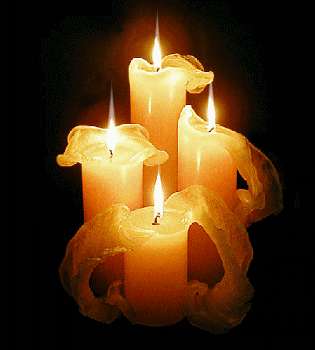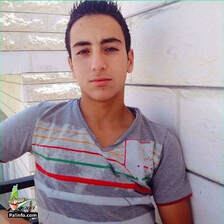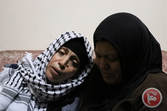8 mar 2017
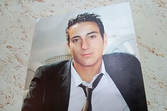
Israeli human rights NGO B’Tselem released a report on Tuesday slamming Israeli border police’s “profound disregard” for the life of 17-year-old Qusay al-Umour, who was shot dead in January during clashes in the southern occupied West Bank village of Tuqu, calling his killing “unjustified and unlawful.”
Video footage of the moments immediately following al-Umour being shot by Israeli forces elicited a strong emotional response from locals at the time, as it showed Israeli soldiers violently seizing and carrying the teenager’s limp body by his dangling arms and legs, his head and back banging on the ground.
In Tuesday’s report, B’Tselem detailed the hour and a half of events leading up to the moment Israeli border police fatally shot al-Umour with four 0.22-inch caliber bullets, contradicting the Israeli army’s claims at the time that the clashes “involved some 200 Palestinians, which included the throwing of stones and Molotov cocktails at (Israeli) forces,” and that al-Umour was the “main instigator” in the clashes.
“This version of events has no basis in reality,” B’Tselem said, pointing out that not only were no Molotov cocktails thrown prior to the shooting of al-Umour, but that the clashes had significantly calmed in the moments before the teen was killed.
“Prior to the shooting of al-Umour, the clashes in Tuqu included only stone throwing at the security forces by some 10 youths. Even these clashes had practically stopped when the border police officer shot and killed al-Umour. (B’Tselem’s) investigation also shows that al-Umour and his friends were at a distance of 80 to 100 meters from the security forces, so they did not constitute any danger.”
B’Tselem included the witness testimony of Taysir Abu Mfareh, 47, a resident of Tuqu and the administrative director of the Tuqu municipal council, who said “things were much calmer” at the time al-Umour was killed.
“Three guys, including al-Umour, moved over to the olive grove, about 80 meters away from the soldiers. Things were much calmer. I looked at the soldiers and at the youths, who threw a few stones at the soldiers every few minutes. I thought that the clashes were just about over,” Mfareh said.
“Suddenly I saw a soldier behind a military vehicle shoot toward the olive trees, and I heard gunfire, not loud but several bullets in quick succession. Several soldiers rushed toward the olive trees, running until they reached the injured youth. A few soldiers picked him up and ran with him toward the military jeeps, his back hitting the ground.”
B’Tselem went on to point out that al-Umour was killed by 0.22 inch caliber bullets, which according to the open-fire regulations of the Israeli army, should be used only in situations of “mortal danger,” similar to the use of live ammunition.
“Over the past two years, however, the military has almost routinely used these bullets as a means of crowd control, even when the troops on the ground are not in mortal danger. Over the past two years, this policy has led to the deaths of six Palestinians (including al-Umour) and to hundreds of injuries, some severe,” B’Tselem concluded.
Following al-Umour’s death, Palestinian legal NGO BADIL also concluded that “whether he was throwing stones at the soldiers or not, al-Umour could not have presented a lethal threat to the well-protected Israeli border police from a distance of around 100 meters, and the use of live ammunition against him was therefore unjustified.”
The NGO denounced the “complete lack of consideration for (al-Umour’s) human dignity or his traumatic injuries.”
In dozens of cases, Israel’s version of events has been disputed by witnesses, activists, and rights groups who have denounced what they have termed a "shoot-to-kill" policy against Palestinians who did not constitute a threat at the time of their death, or who could have been subdued in a non-lethal manner -- amid a backdrop of impunity for Israelis who committed the killings.
Though the Israeli army and military police opened an official investigation into al-Umour’s death, the precedent set by cases such as that of 15-year-old Khalid Bahr, who was shot dead by Israeli forces in October for allegedly throwing rocks at soldiers during a raid in a Hebron-area village, casts doubts on the likelihood of real accountability.
According to rights group Yesh Din, of 186 criminal investigations into suspected offenses against Palestinians opened by the Israeli army in 2015, just four resulted in indictments.
Video footage of the moments immediately following al-Umour being shot by Israeli forces elicited a strong emotional response from locals at the time, as it showed Israeli soldiers violently seizing and carrying the teenager’s limp body by his dangling arms and legs, his head and back banging on the ground.
In Tuesday’s report, B’Tselem detailed the hour and a half of events leading up to the moment Israeli border police fatally shot al-Umour with four 0.22-inch caliber bullets, contradicting the Israeli army’s claims at the time that the clashes “involved some 200 Palestinians, which included the throwing of stones and Molotov cocktails at (Israeli) forces,” and that al-Umour was the “main instigator” in the clashes.
“This version of events has no basis in reality,” B’Tselem said, pointing out that not only were no Molotov cocktails thrown prior to the shooting of al-Umour, but that the clashes had significantly calmed in the moments before the teen was killed.
“Prior to the shooting of al-Umour, the clashes in Tuqu included only stone throwing at the security forces by some 10 youths. Even these clashes had practically stopped when the border police officer shot and killed al-Umour. (B’Tselem’s) investigation also shows that al-Umour and his friends were at a distance of 80 to 100 meters from the security forces, so they did not constitute any danger.”
B’Tselem included the witness testimony of Taysir Abu Mfareh, 47, a resident of Tuqu and the administrative director of the Tuqu municipal council, who said “things were much calmer” at the time al-Umour was killed.
“Three guys, including al-Umour, moved over to the olive grove, about 80 meters away from the soldiers. Things were much calmer. I looked at the soldiers and at the youths, who threw a few stones at the soldiers every few minutes. I thought that the clashes were just about over,” Mfareh said.
“Suddenly I saw a soldier behind a military vehicle shoot toward the olive trees, and I heard gunfire, not loud but several bullets in quick succession. Several soldiers rushed toward the olive trees, running until they reached the injured youth. A few soldiers picked him up and ran with him toward the military jeeps, his back hitting the ground.”
B’Tselem went on to point out that al-Umour was killed by 0.22 inch caliber bullets, which according to the open-fire regulations of the Israeli army, should be used only in situations of “mortal danger,” similar to the use of live ammunition.
“Over the past two years, however, the military has almost routinely used these bullets as a means of crowd control, even when the troops on the ground are not in mortal danger. Over the past two years, this policy has led to the deaths of six Palestinians (including al-Umour) and to hundreds of injuries, some severe,” B’Tselem concluded.
Following al-Umour’s death, Palestinian legal NGO BADIL also concluded that “whether he was throwing stones at the soldiers or not, al-Umour could not have presented a lethal threat to the well-protected Israeli border police from a distance of around 100 meters, and the use of live ammunition against him was therefore unjustified.”
The NGO denounced the “complete lack of consideration for (al-Umour’s) human dignity or his traumatic injuries.”
In dozens of cases, Israel’s version of events has been disputed by witnesses, activists, and rights groups who have denounced what they have termed a "shoot-to-kill" policy against Palestinians who did not constitute a threat at the time of their death, or who could have been subdued in a non-lethal manner -- amid a backdrop of impunity for Israelis who committed the killings.
Though the Israeli army and military police opened an official investigation into al-Umour’s death, the precedent set by cases such as that of 15-year-old Khalid Bahr, who was shot dead by Israeli forces in October for allegedly throwing rocks at soldiers during a raid in a Hebron-area village, casts doubts on the likelihood of real accountability.
According to rights group Yesh Din, of 186 criminal investigations into suspected offenses against Palestinians opened by the Israeli army in 2015, just four resulted in indictments.
23 jan 2017
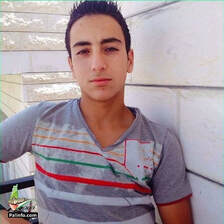
Israeli authorities have opened an investigation into last week’s killing of 17-year-old Qusay al-Umour, which sparked outrage after a video was released showing Israeli forces dragging the teen by his limbs as his head banged against a stone-ridden dirt pathway.
Haaretz reported on Monday that the investigation was opened by the Israeli army in conjunction with military police, in accordance with the Israeli Justice Ministry's policy that a joint investigation “must be made into every instance of a Palestinian killed in the West Bank during a non-combat situation.”
The Times of Israel said that the opening of the investigation the Israeli army “indicated it was no longer certain the soldiers had conducted themselves correctly.”
Al-Umour was shot and killed by Israeli border police officers last Monday during clashes on a shared Israeli settler-Palestinian road in Tuqu, close to the nearby illegal Israeli settlement of Tekoa.
Both Haaretz and the Times of Israel highlighted the army’s claims initial claims that al-Umour was a main “instigator” in the “violent riots,” with the Times of Israel including the claim that “over 200 Palestinians” participated in the protests, both claims made by the Israeli army to Ma’an last week.
Contrary to the army’s claims, locals in Tuqu and witnesses told Ma’an that there were fewer than a dozen teens from the village throwing rocks at Israeli military jeeps before al-Umour was shot.
Meanwhile, a video taken by Palestinian journalist Hisham Abu Shaqra published shortly after the incident showed al-Umour lying motionless in a field, an estimated 100 meters away from the clashes, just after he was shot.
Human rights NGO BADIL released a statement on Wednesday calling al-Umour’s death an “extrajudicial killing,” saying that the video footage provided “evidence contradicting Israeli accounts and raises concerns about the adherence of the Israeli forces to the central tenets of international law.”
The group quoted Abu Shaqra, the journalist who recorded the video, who said that al-Umour was not a threat to Israeli forces when he was fatally shot.
“Qusay was sitting between olive trees, you know how guys are, he was just watching the soldiers...Only a few seconds after (I was) looking at him the Israeli forces shot him three or four times,” Abu Shaqra said.
Al-Umour was the fourth Palestinian to be killed by Israeli forces in January 2017. Two more Palestinians were killed by Israeli forces in the week since.
In dozens of cases, Israel’s version of events has been disputed by witnesses, activists, and rights groups who have denounced what they have termed a "shoot-to-kill" policy against Palestinians who did not constitute a threat at the time of their death, or who could have been subdued in a non-lethal manner -- amid a backdrop of impunity for Israelis who committed the killings.
According to rights group Yesh Din, of 186 criminal investigations into suspected offenses against Palestinians opened by the Israeli army in 2015, just four resulted in indictments.
Haaretz reported on Monday that the investigation was opened by the Israeli army in conjunction with military police, in accordance with the Israeli Justice Ministry's policy that a joint investigation “must be made into every instance of a Palestinian killed in the West Bank during a non-combat situation.”
The Times of Israel said that the opening of the investigation the Israeli army “indicated it was no longer certain the soldiers had conducted themselves correctly.”
Al-Umour was shot and killed by Israeli border police officers last Monday during clashes on a shared Israeli settler-Palestinian road in Tuqu, close to the nearby illegal Israeli settlement of Tekoa.
Both Haaretz and the Times of Israel highlighted the army’s claims initial claims that al-Umour was a main “instigator” in the “violent riots,” with the Times of Israel including the claim that “over 200 Palestinians” participated in the protests, both claims made by the Israeli army to Ma’an last week.
Contrary to the army’s claims, locals in Tuqu and witnesses told Ma’an that there were fewer than a dozen teens from the village throwing rocks at Israeli military jeeps before al-Umour was shot.
Meanwhile, a video taken by Palestinian journalist Hisham Abu Shaqra published shortly after the incident showed al-Umour lying motionless in a field, an estimated 100 meters away from the clashes, just after he was shot.
Human rights NGO BADIL released a statement on Wednesday calling al-Umour’s death an “extrajudicial killing,” saying that the video footage provided “evidence contradicting Israeli accounts and raises concerns about the adherence of the Israeli forces to the central tenets of international law.”
The group quoted Abu Shaqra, the journalist who recorded the video, who said that al-Umour was not a threat to Israeli forces when he was fatally shot.
“Qusay was sitting between olive trees, you know how guys are, he was just watching the soldiers...Only a few seconds after (I was) looking at him the Israeli forces shot him three or four times,” Abu Shaqra said.
Al-Umour was the fourth Palestinian to be killed by Israeli forces in January 2017. Two more Palestinians were killed by Israeli forces in the week since.
In dozens of cases, Israel’s version of events has been disputed by witnesses, activists, and rights groups who have denounced what they have termed a "shoot-to-kill" policy against Palestinians who did not constitute a threat at the time of their death, or who could have been subdued in a non-lethal manner -- amid a backdrop of impunity for Israelis who committed the killings.
According to rights group Yesh Din, of 186 criminal investigations into suspected offenses against Palestinians opened by the Israeli army in 2015, just four resulted in indictments.
17 jan 2017
As traffic slowed for a moment, young men -- residents of Tuqu where 17-year-old Qusay al-Umour was shot dead less than 24 hours earlier -- hopped out of their vehicles to grab stones from the side of the road and hurl them as far as they could at the soldiers, not knowing if one of them had shot the four fatal bullets that killed their friend.
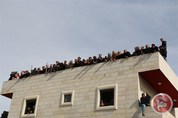
Women and children gathered on rooftops, passersby honked their horns, and young men hung out of the windows of speeding cars waving Palestinian and Fatah flags, with pictures of al-Umour, the latest “martyr,” taped to the backs of their cars.
Within moments of arriving to the teenager’s hometown, thousands of Tuqu residents flooded the main street -- men and teenage boys crowding around the ambulance holding al-Umour’s body, women and children peering from windows and rooftops wiping away tears.
The sea of people joined al-Umour’s family and school friends to chant slogans of redemption as they marched through the town holding the body of their slain son and friend draped in a Palestinian flag, with a traditional Palestinian kuffiyeh scarf wrapped around his head.
As the procession stopped in front of the teenager’s house, where women from the al-Umour family waited to say goodbye to Qusay, the chants of the men in the street quickly faded amid the piercing shrills and screams of the women inside.
“They [Israelis] are terrorists. They are tyrants. They didn’t allow me to see him. They didn’t help him,” Fatima al-Umour, Qusay’s mother, said in a faint cry, barely able to speak as dozens of mourning women crowded around her.
“I kept asking them [the soldiers] to give him first aid without taking me with them, but they didn’t. They dragged him to a remote area and we didn’t know where he was. They took him behind the jeep, tore his clothes, then they threw him away and left him alone [to die],” she said as she struggled to sit up straight, resting her head on a family member next to her.
“Lift your head up, you are the mother of a martyr,” some women shouted in an attempt to comfort Fatima, “your son is a hero!”
The attempts at consolation were drowned out by Fatima's cries.
“Oh my beloved son! They tortured you and dragged you. They have destroyed me. May God bring them to justice,” she continued to wail, fixing the kuffiyeh around her head as television crews, family members, and mourners attempted to push their way in front of her.
Within moments of arriving to the teenager’s hometown, thousands of Tuqu residents flooded the main street -- men and teenage boys crowding around the ambulance holding al-Umour’s body, women and children peering from windows and rooftops wiping away tears.
The sea of people joined al-Umour’s family and school friends to chant slogans of redemption as they marched through the town holding the body of their slain son and friend draped in a Palestinian flag, with a traditional Palestinian kuffiyeh scarf wrapped around his head.
As the procession stopped in front of the teenager’s house, where women from the al-Umour family waited to say goodbye to Qusay, the chants of the men in the street quickly faded amid the piercing shrills and screams of the women inside.
“They [Israelis] are terrorists. They are tyrants. They didn’t allow me to see him. They didn’t help him,” Fatima al-Umour, Qusay’s mother, said in a faint cry, barely able to speak as dozens of mourning women crowded around her.
“I kept asking them [the soldiers] to give him first aid without taking me with them, but they didn’t. They dragged him to a remote area and we didn’t know where he was. They took him behind the jeep, tore his clothes, then they threw him away and left him alone [to die],” she said as she struggled to sit up straight, resting her head on a family member next to her.
“Lift your head up, you are the mother of a martyr,” some women shouted in an attempt to comfort Fatima, “your son is a hero!”
The attempts at consolation were drowned out by Fatima's cries.
“Oh my beloved son! They tortured you and dragged you. They have destroyed me. May God bring them to justice,” she continued to wail, fixing the kuffiyeh around her head as television crews, family members, and mourners attempted to push their way in front of her.
|
|
“They [Israeli soldiers] dragged him in a brutal way to the military vehicle.
Nobody in the world would do that,” a male family member sitting next to Fatima said, echoing the frustration of the circumstances under which the teenager was killed. The residents of Tuqu -- those who were present at the clashes where al-Umour was shot, and those who saw the video documenting the events immediately following his death -- seemed to be sure of two things: the high school student was wrongfully killed by Israeli forces, and they do not know, and will likely never know, if Qusay was already dead when soldiers got a hold of his motionless body, or if he died in their custody. |
The footage taken by Palestinian journalist Hisham Abu Sharqah immediately after al-Umour was shot went viral on social media, as it seemingly
contradicted Israeli army allegations that al-Umour had been the "main instigator" of the clashes that day.
The video shows Israeli forces running towards the teenager's motionless body, lying in a field of olive trees at least 100 meters away from the road where the clashes were taking place.
As the Israeli soldiers reach a motionless al-Umour lying face down in the ground, one soldier can be seen stumbling on al-Umour's legs, while another one gets on top of him, forcefully turning him onto his back before more soldiers arrive. The video then shows four soldiers, each carrying one of al-Umour's arms or legs, dragging the motionless teen to the road in an area surrounded by soldiers and armored jeeps.
contradicted Israeli army allegations that al-Umour had been the "main instigator" of the clashes that day.
The video shows Israeli forces running towards the teenager's motionless body, lying in a field of olive trees at least 100 meters away from the road where the clashes were taking place.
As the Israeli soldiers reach a motionless al-Umour lying face down in the ground, one soldier can be seen stumbling on al-Umour's legs, while another one gets on top of him, forcefully turning him onto his back before more soldiers arrive. The video then shows four soldiers, each carrying one of al-Umour's arms or legs, dragging the motionless teen to the road in an area surrounded by soldiers and armored jeeps.
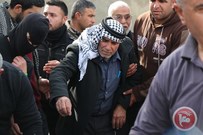
Mourners hold onto the arms of Qusay al-Umour's father, center, as he overlooks his son's grave.
Though initial reports claimed that al-Umour was shot six times, a medical source from the Hussein hospital in Beit Jala, where the body was examined, told Ma’an that the teenager was shot four times -- twice in the chest, once in each hip.
“One of the bullets perforated his heart. Medically, this is a fatal bullet,” the source said
Despite medical opinions surrounding the case, which have yet to be formalized, Ahmad al-Umour, a cousin of the slain teenager, told Ma’an that he -- like Fatima, his family, and the rest of the village -- did not know what to believe.
When asked to recall details of the incident, specifically regarding the allegation that al-Umour was the “main instigator” despite being shot from a distance of at least 100 meters, Ahmad, distracted and overwhelmed, could fixate only on the fact that al-Umour was dragged by his limbs and left to bleed, with villagers unable to reach him.
“They fired four rounds at his chest, and he fell immediately. They left him bleeding without offering any first aid. After we tried to rush to help him, the soldiers took him to a military base at the entrance of the town,” Ahmad said. “Then they notified the Palestinian liaison office of his martyrdom, and the Palestinian Red Crescent went to receive the martyr’s body.”
Ahmad managed to say a few words about his cousin just as al-Umour's body was being carried into the mosque, the last stop in the procession before he would be laid to rest.
“Qusay was beloved among the village’s youth. He always helped everyone, he helped his classmates with their lessons. He was sociable,” Ahmad said, adding that al-Umour was also "active in the resistance" against the Israeli soldiers who regularly raid the village.
But when questioned about Qusay or about Monday’s events, Ahmad, Fatima, and every relative and villager Ma’an spoke with became fixated on the hour or so when the teenager was in Israeli custody before his body was returned. Not on the fact that he was shot in the chest, but that the Israeli army had his body, and for that reason, they could never be sure exactly what happened to him.
Every banner hanging in the village's streets and poster taped to the backs of cars featured an enlarged screencap of the image of four Israeli soldiers dragging al-Umour’s limp body by his legs and arms, overlaid with a smiling picture of the slain teen on the right, and late Palestinian President Yasser Arafat on the left.
Though official medical reports might solve the mystery surrounding whether al-Umour was killed instantly or whether he died after being dragged by Israeli forces and held in Israeli custody, the overwhelming sentiment of denial and doubt surrounding the events of the teenager’s death will likely never be put to rest.
According to Ma'an documentation al-Umour was the 251st Palestinian to be killed by Israelis since a wave of unrest broke out across the occupied West Bank, East Jerusalem and Israel in October 2015. Though the majority of the Palestinians have been killed by Israeli forces after attempting or allegedly attempting to carry out attacks against Israelis, at least 65 Palestinians, like al-Umour, were shot dead during clashes with Israeli forces during that time period.
Al-Umour was the fourth Palestinian to be killed by Israeli forces in January 2017. Yet on Tuesday, another Palestinian was killed by Israeli forces in the northern occupied West Bank, after allegedly attempting to stab Israeli soldiers.
In tens of cases, Israel’s version of events has been disputed by witnesses, activists, and rights groups who have denounced what they have termed as a "shoot-to-kill" policy against Palestinians who did not constitute a threat at the time of their death, or who could have been subdued in a non-lethal manner -- amid a backdrop of impunity for Israeli forces who have committed the killings.
When asked if Israeli authorities would be opening an investigation into al-Umour’s death, as they have done in a handful of cases, an Israeli police spokesperson told Ma’an that he “was not aware” of any investigation.
Were an investigation to be opened, the precedent set by cases such as that of 15-year-old Khalid Bahr, who was shot dead by Israeli forces in October for allegedly throwing rocks at soldiers during a raid in a Hebron-area village, casts doubts on the likelihood of real accountability.
While witnesses claimed that Bahr was just walking home from school and not participating in the rock throwing, and an internal Israeli army investigation later revealed that the lives of Israeli soldiers were not at risk when Khalid was killed, no serious repercussions have befallen on those who killed the teenager.
According to rights group Yesh Din, of 186 criminal investigations into suspected offenses against Palestinians opened by the Israeli army in 2015, just four resulted in indictments.
Whether al-Umour's death will have broader repercussions on the accountability of Israeli forces, it will likely not change much for al-Umour’s family, friends, and his fellow villagers.
“They took him about a kilometer away without giving him any medical help or first aid until he bled to death," a relative of al-Umour told Ma’an during the funeral. "What would you tell the world about killing a child this way? This is criminal and terrorist behavior.”
Though initial reports claimed that al-Umour was shot six times, a medical source from the Hussein hospital in Beit Jala, where the body was examined, told Ma’an that the teenager was shot four times -- twice in the chest, once in each hip.
“One of the bullets perforated his heart. Medically, this is a fatal bullet,” the source said
Despite medical opinions surrounding the case, which have yet to be formalized, Ahmad al-Umour, a cousin of the slain teenager, told Ma’an that he -- like Fatima, his family, and the rest of the village -- did not know what to believe.
When asked to recall details of the incident, specifically regarding the allegation that al-Umour was the “main instigator” despite being shot from a distance of at least 100 meters, Ahmad, distracted and overwhelmed, could fixate only on the fact that al-Umour was dragged by his limbs and left to bleed, with villagers unable to reach him.
“They fired four rounds at his chest, and he fell immediately. They left him bleeding without offering any first aid. After we tried to rush to help him, the soldiers took him to a military base at the entrance of the town,” Ahmad said. “Then they notified the Palestinian liaison office of his martyrdom, and the Palestinian Red Crescent went to receive the martyr’s body.”
Ahmad managed to say a few words about his cousin just as al-Umour's body was being carried into the mosque, the last stop in the procession before he would be laid to rest.
“Qusay was beloved among the village’s youth. He always helped everyone, he helped his classmates with their lessons. He was sociable,” Ahmad said, adding that al-Umour was also "active in the resistance" against the Israeli soldiers who regularly raid the village.
But when questioned about Qusay or about Monday’s events, Ahmad, Fatima, and every relative and villager Ma’an spoke with became fixated on the hour or so when the teenager was in Israeli custody before his body was returned. Not on the fact that he was shot in the chest, but that the Israeli army had his body, and for that reason, they could never be sure exactly what happened to him.
Every banner hanging in the village's streets and poster taped to the backs of cars featured an enlarged screencap of the image of four Israeli soldiers dragging al-Umour’s limp body by his legs and arms, overlaid with a smiling picture of the slain teen on the right, and late Palestinian President Yasser Arafat on the left.
Though official medical reports might solve the mystery surrounding whether al-Umour was killed instantly or whether he died after being dragged by Israeli forces and held in Israeli custody, the overwhelming sentiment of denial and doubt surrounding the events of the teenager’s death will likely never be put to rest.
According to Ma'an documentation al-Umour was the 251st Palestinian to be killed by Israelis since a wave of unrest broke out across the occupied West Bank, East Jerusalem and Israel in October 2015. Though the majority of the Palestinians have been killed by Israeli forces after attempting or allegedly attempting to carry out attacks against Israelis, at least 65 Palestinians, like al-Umour, were shot dead during clashes with Israeli forces during that time period.
Al-Umour was the fourth Palestinian to be killed by Israeli forces in January 2017. Yet on Tuesday, another Palestinian was killed by Israeli forces in the northern occupied West Bank, after allegedly attempting to stab Israeli soldiers.
In tens of cases, Israel’s version of events has been disputed by witnesses, activists, and rights groups who have denounced what they have termed as a "shoot-to-kill" policy against Palestinians who did not constitute a threat at the time of their death, or who could have been subdued in a non-lethal manner -- amid a backdrop of impunity for Israeli forces who have committed the killings.
When asked if Israeli authorities would be opening an investigation into al-Umour’s death, as they have done in a handful of cases, an Israeli police spokesperson told Ma’an that he “was not aware” of any investigation.
Were an investigation to be opened, the precedent set by cases such as that of 15-year-old Khalid Bahr, who was shot dead by Israeli forces in October for allegedly throwing rocks at soldiers during a raid in a Hebron-area village, casts doubts on the likelihood of real accountability.
While witnesses claimed that Bahr was just walking home from school and not participating in the rock throwing, and an internal Israeli army investigation later revealed that the lives of Israeli soldiers were not at risk when Khalid was killed, no serious repercussions have befallen on those who killed the teenager.
According to rights group Yesh Din, of 186 criminal investigations into suspected offenses against Palestinians opened by the Israeli army in 2015, just four resulted in indictments.
Whether al-Umour's death will have broader repercussions on the accountability of Israeli forces, it will likely not change much for al-Umour’s family, friends, and his fellow villagers.
“They took him about a kilometer away without giving him any medical help or first aid until he bled to death," a relative of al-Umour told Ma’an during the funeral. "What would you tell the world about killing a child this way? This is criminal and terrorist behavior.”
16 jan 2017

Qusay Hasna al-Umour 17
Israeli forces shot and killed a Palestinian teenager during clashes in the Bethlehem-area village of Tuqu in the southern occupied West Bank on Monday evening, the Palestinian Red Crescent (PRC) ambulance service said.
A PRC spokesperson told Ma'an that 17-year-old Qusay Hasna al-Umour was shot with live ammunition in the chest at least three times, and that Israeli forces had detained him for an unspecified period of time before handing over his body to the health organization.
It remained unclear whether al-Umour was already dead when Israeli forces got a hold of him, or if he succumbed to his injuries while in custody.
An Israeli army spokesperson told Ma’an that they were looking into the reports.
Four other Palestinians, including a woman, were also shot and injured during the clashes.
Israeli forces shot and killed a Palestinian teenager during clashes in the Bethlehem-area village of Tuqu in the southern occupied West Bank on Monday evening, the Palestinian Red Crescent (PRC) ambulance service said.
A PRC spokesperson told Ma'an that 17-year-old Qusay Hasna al-Umour was shot with live ammunition in the chest at least three times, and that Israeli forces had detained him for an unspecified period of time before handing over his body to the health organization.
It remained unclear whether al-Umour was already dead when Israeli forces got a hold of him, or if he succumbed to his injuries while in custody.
An Israeli army spokesperson told Ma’an that they were looking into the reports.
Four other Palestinians, including a woman, were also shot and injured during the clashes.
